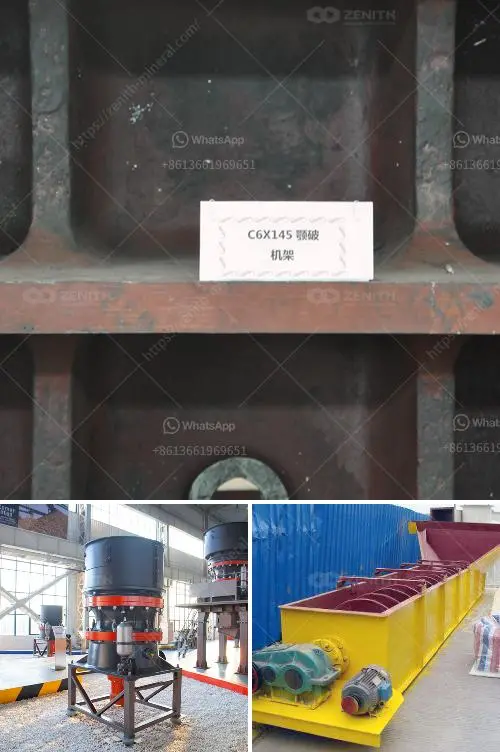The ideal workflow for splitting, crushing, and screening granite involves several key steps and considerations to ensure efficiency, quality, and safety. Each phase should be carefully planned and executed with the right equipment and techniques. Here’s a typical workflow:
-
Planning and Site Preparation:
- Conduct a geological survey to assess the quality and quantity of granite.
- Obtain all necessary permits and comply with environmental regulations.
- Prepare the site by clearing vegetation and creating access roads.
-
Drilling and Splitting:
- Identify natural fracture lines in the granite to minimize wastage.
- Use drilling rigs to create holes along these lines for splitting.
- Use controlled explosives or hydraulic splitters to break the granite into manageable blocks, taking care to minimize vibration and noise pollution.
-
Primary Crushing:
- Transport the split granite blocks to the primary crusher.
- Use jaw crushers for the initial crushing process to reduce the size of the granite blocks to a manageable size for further processing.
-
Secondary Crushing:
- Transfer the material to a secondary crusher (e.g., cone crusher or impact crusher) for further size reduction and to achieve the desired aggregate size.
- Adjust the crusher settings to optimize product size and quality.
-
Screening:
- Use vibrating screens to separate crushed granite into different size fractions.
- Ensure proper calibration to achieve desired product specifications like gravel, sand, or stone dust.
-
Quality Control:
- Implement a quality control plan to regularly test material at different stages.
- Adjust processes as necessary based on test results to meet quality standards.
-
Transportation and Stockpiling:
- Transport screened materials to storage areas using conveyors or trucks.
- Properly stockpile by size to prevent cross-contamination and ensure easy access for loading.
-
Dust and Waste Management:
- Implement dust suppression measures such as water sprays and dust extraction systems to minimize airborne particulates.
- Manage waste, including fines and overburden, through recycling processes or proper disposal.
-
Maintenance and Safety:
- Regularly maintain all equipment to prevent downtime and extend machinery life.
- Implement stringent safety protocols to protect workers, including the use of personal protective equipment (PPE).
By following these steps and continuously optimizing the process, you can efficiently produce high-quality granite products. It’s vital to keep updating procedures based on technological advancements and environmental considerations.

